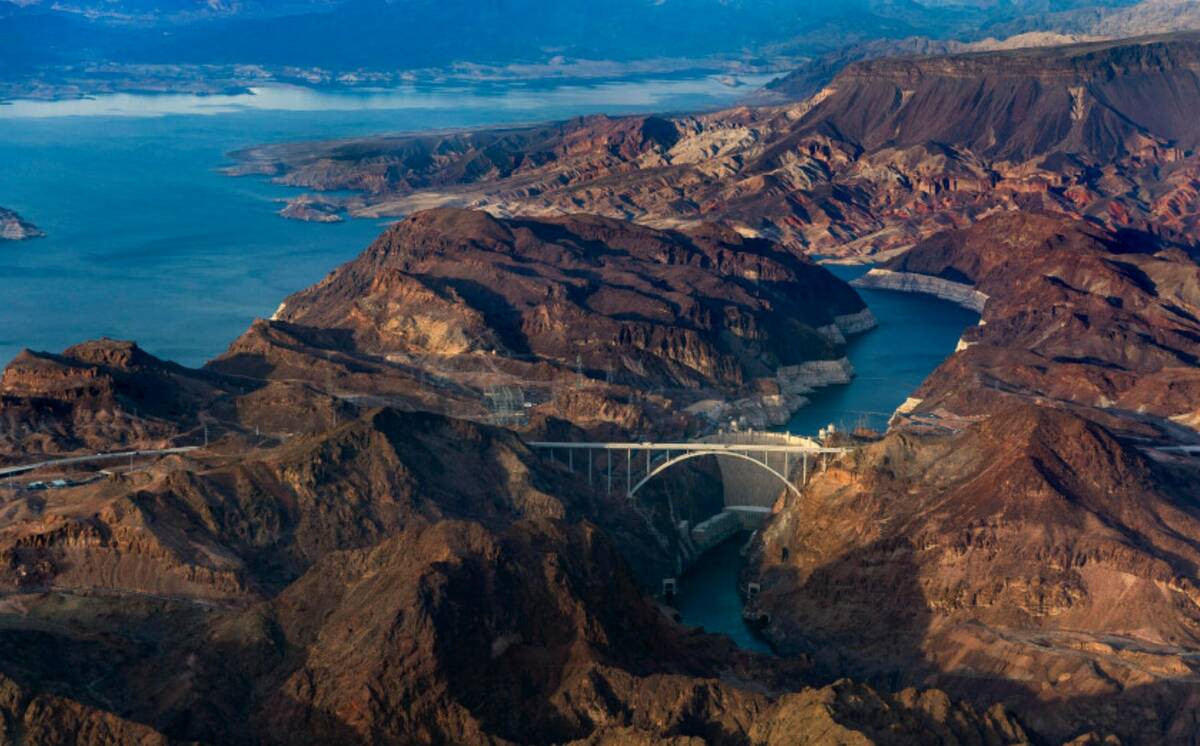Senators pursue disaster funding to help Lake Mead

Senators from the two states that border Lake Mead are calling for the National Park Service to use some of the $1.5 billion in natural disaster recovery funding the agency received to address the drought-stricken reservoir.
The latest federal spending bill signed by President Joe Biden in December allocated $1.5 billion to pay for recovery efforts at national park lands that have been hit by natural disaster, including severe flooding at Yellowstone National Park last summer that washed out several sections of roads.
In a letter sent Tuesday to National Park Service Director Charles Sams and Office of Management and Budget Director Shalanda Young, Nevada Democratic Sens. Jacky Rosen and Catherine Cortez Masto, along with Democrat Mark Kelly and Independent Kyrsten Sinema of Arizona, asked that Lake Mead’s shrinking shorelines also receive some of that financial attention to address the long-term toll that 23 years of drought have taken on the nation’s largest reservoir.
“We ask that you give the same consideration to the Lake Mead National Recreation Area and provide funding for critical infrastructure needs to protect the lake and ensure the recreation area, including the boat launch ramps around the lake, are accessible to all visitors,” the senators wrote in the letter.
Lake Mead currently sits at just 28 percent capacity, and its levels have fallen by roughly 170 feet since the drought started more than two decades ago. That decline has accelerated over the last two years, which forced the federal government to declare a water shortage along the Colorado River and prompted calls for the seven states that rely on the river to find ways to cut water use by as much as 25 percent in the coming years.
The lake’s levels aren’t all that’s falling. After seeing about 7.6 million visitors in 2021, Lake Mead’s visitation dropped to just 5.6 million last year while overall park visitation across the country increased by 5 percent.
The quickly receding shorelines have taken a toll on boating access at the lake, which now has just one operational boating launch ramp, Hemenway Harbor, after the park service was forced to close four others because of the costs to continue extending the ramps. Marina operators at Calville Bay and Temple Bar have installed temporary launching pads for boats, but they are not managed by the park service.
“These disastrous conditions have reshaped Lake Mead National Recreation Area’s one and a half million acres of incredible landscapes and slowly depleted the largest reservoir in the United States,” the senators wrote. “Visitors to Lake Mead play a significant role in the local economy, supporting small businesses and workers who depend on robust outdoor recreation tourism for their livelihoods. The low water levels have seriously impacted recreation, particularly with the closure of all but one boat launch ramp at the lake, putting businesses and jobs at risk.”
The park service is currently reviewing options for the future of the boat ramps at Lake Mead, from moving marinas and extending access to effectively closing off motorized boating access altogether, with the outcome largely dependent on the level of funding that would be made available to address those projects.
The agency previously said it expects to have a draft of its plan by the end of spring.
Contact Colton Lochhead at clochhead@reviewjournal.com. Follow @ColtonLochhead on Twitter.